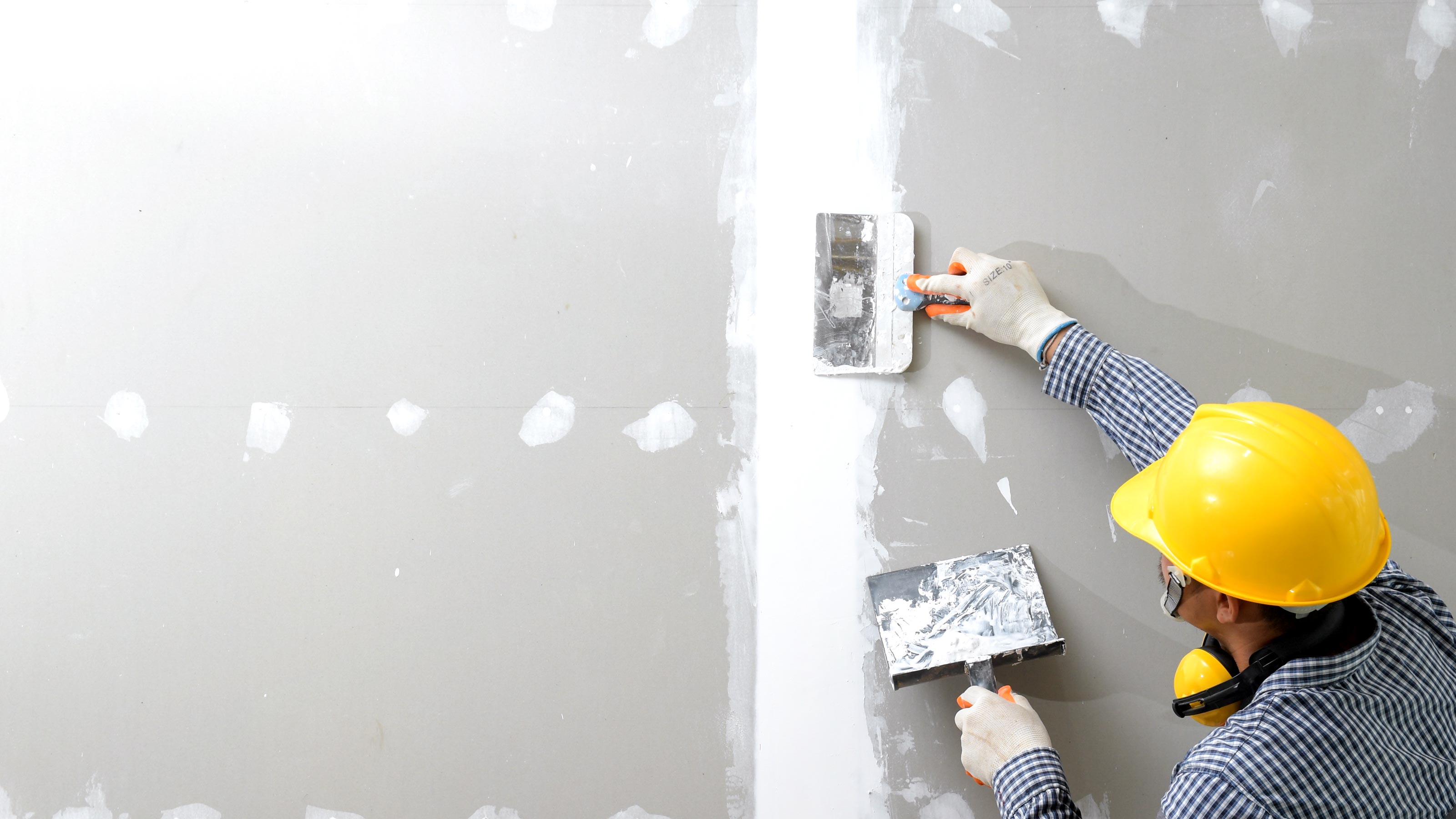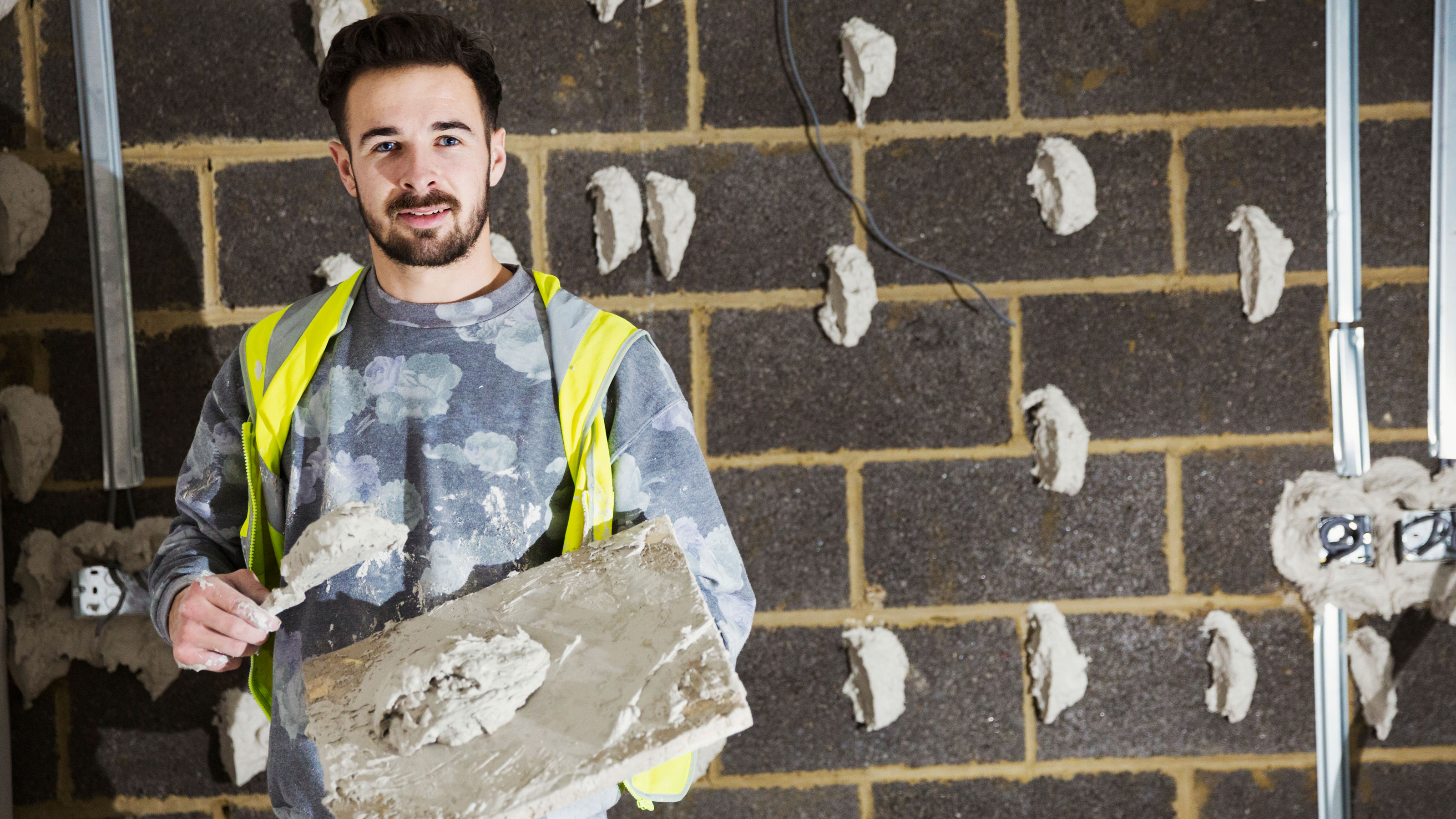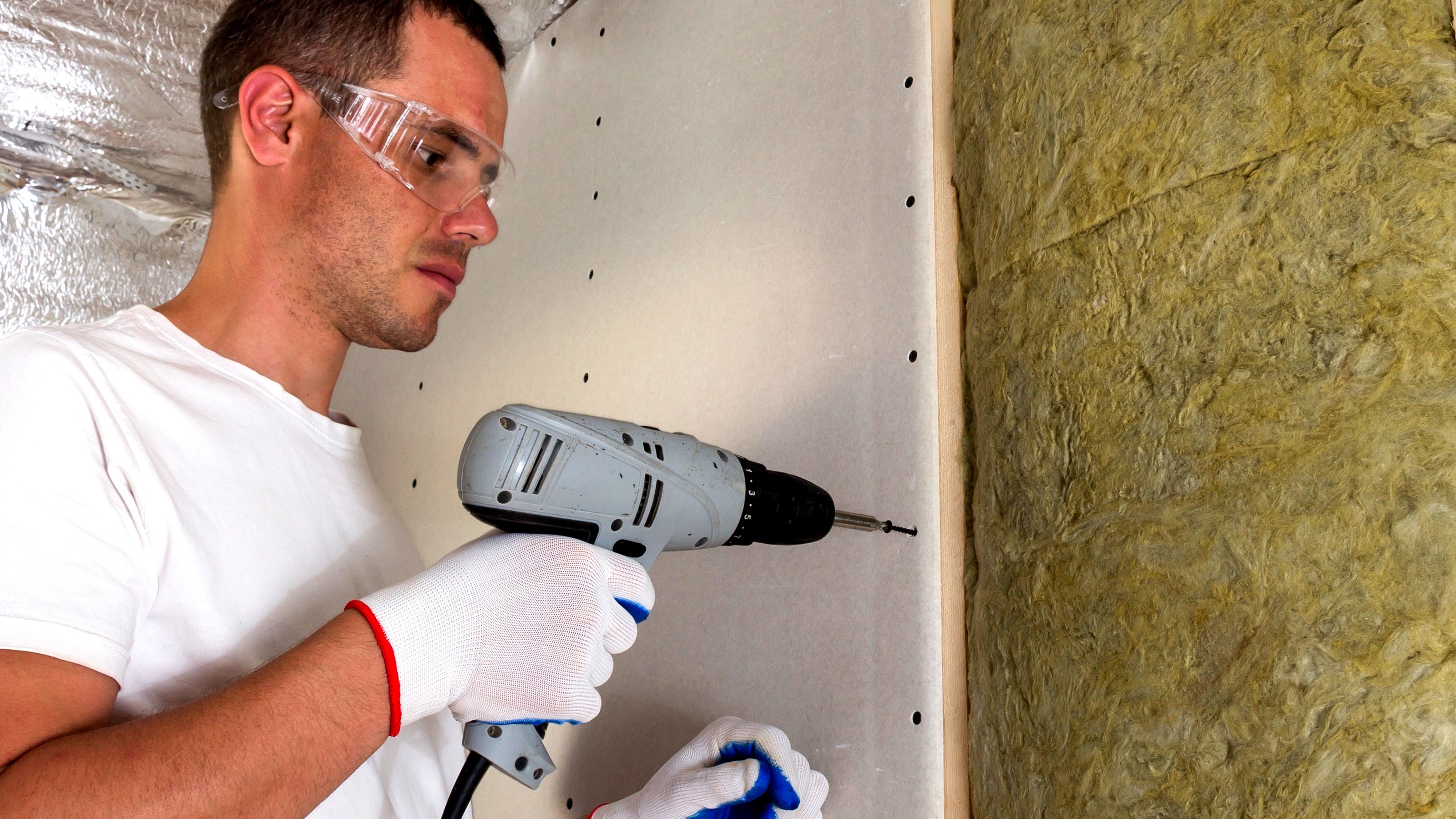Plasterboarding: What you need to know for a DIY project
We take a look at the pros of plasterboarding with expert advice on why you should consider it over wet plastering

Plasterboarding is the common choice when getting ready to plaster walls or ceilings, and there are a few reasons for this.
Firstly, it is versatile as you can place it on top of bare brickwork or attach it to a frame without too much preparation. It is great for covering and hiding ugly walls. Another reason is that it is quicker to install and is ready to work with much sooner compared with solid plastering. It’s also a skill that is easier and quicker to pick up than traditional solid plastering, which makes it an ideal choice for DIYers.
Here we take a look at how to use plasterboard, why you might use it and how to skim plaster. We also answer some commonly asked questions
The pros of plasterboarding over solid plastering
Plasterboarding brings with it a host of advantages over the more traditional solid plastering typically seen in older homes as Gary Blackburn, Plaster Support Manager at Saint Gobain explains, “The pros of using plasterboard are speed of installation, ease of installation (less skill required), quicker drying times and labour availability.”
In contrast, solid plastering is a skill that DIY enthusiasts will struggle to conquer and takes a lot longer to learn and master. Typically, it is found in older homes and involves more work than putting up plasterboard. And, it is also a method that isn’t used if you are looking at how to build a partition wall, or stud wall.
Here we take a more in-depth look at the pros and reveal what plasterboarding can bring to DIYers.
Speed of installation
If plastering onto brickwork using plasterboard is a much quicker option, it can take hours rather than days. Dot and dab is a popular method for putting up plasterboard ready for plastering. Plaster is dabbed onto a wall and the plasterboard is placed on the plaster to attach it to the wall.
This technique means you can get standard flat wall plasterboarded in less than an hour for the more skilled DIYer. It's also an easier technique to pick up for those who are new to plasterboarding.
While dot and dab is the preferred method for getting plasterboard onto brickwork it is not the ideal choice for attaching plasterboard to a ceiling. The adhesive isn’t strong enough to ensure that the plasterboard stays on the ceiling so you need to attach the plasterboard to a wood or metal frame. Check out our how to plasterboard a ceiling guide for more in-depth information on the process.
Ease of installation
Plasterboard is a board that you need to stick to a wall or frame to create the base for plastering. The common width for plasterboard is 120cm (nearly four feet) so you typically only need three boards to create a single wall.
There isn’t a lot of work involved in putting up a plasterboard sheet. You need to put them into place and use drywall or plasterboard screws like these Diall carbon steel fine plasterboard screws from B&Q to attach. Another skill you will need to know is cutting plasterboard for when you reach a corner. This typically involves a sharp knife, a straight line and a little bending.
Drying times
Typically plasterboard which has been skimmed will dry much quicker than plaster that goes on top of solid plaster. Finishing plaster, which provides the final smooth pinky brown layer of plaster you see on a newly plastered wall is touch dry in around 1.5 to four hours and cured in about 3-10 days. But it dries and cures even quicker on skimmed plasterboard.
Take a look at our ‘How long does plaster take to dry’ guide to get a more in-depth look at setting times and what can affect these times.

Is plasterboarding cheaper than plastering?
Plasterboarding and plastering typically go hand in hand, but if you are comparing putting up plasterboard and skimming plasterboard then the costs are cheaper than traditional solid plastering.
Putting up plasterboard and plastering is also a job that a competent DIY can do themselves, saving on labour costs. A plasterer will charge around £200-£250 a day.
Solid plastering involves more know how and skills and isn’t as easy to pick up as putting up plasterboard and skimming so you would need to call in a professional to get the job done and it will typically take twice as long as plasterboarding.
Can I paint straight onto plasterboard?
Yes you can. General purpose plasterboard is made up of a layer of gypsum – a type of plaster – between two sheets of paper. So it is like painting onto wallpaper, but there are a few points to note when you ask the question ‘Can you paint straight onto plasterboard’.
You need to consider where the plasterboard is located. Standard plasterboard is not waterproof, so it’s not suitable for areas such as kitchens and bathrooms where moisture and water exist. You will also need to cover joints with tape and plaster and in some cases you will need to use a primer to prepare the surface.
Is it better to nail or screw plasterboard?
Using plasterboard screws is the choice of the pros. But it's not quite as simple as you might think. You need to use the right screws and the right size for the plasterboard you are using .
When screwing into plasterboard you need to use bugle head screws as they are countersunk and sit flush without breaking the paper or plaster. You also need to consider size, if using 9.5mm plasterboard you should use a 32mm screw, if using 12.5mm plasterboard you should use a 38mm screw.
Nails can be used but they are much more difficult to get right. It’s common to break the paper of the plasterboard and hit the nail too deep and crush the plaster behind the paper. These are two things you don’t want to do as this can compromise your finish.

Get the Homebuilding & Renovating Newsletter
Bring your dream home to life with expert advice, how to guides and design inspiration. Sign up for our newsletter and get two free tickets to a Homebuilding & Renovating Show near you.
Steve Jenkins is a freelance content creator with over two decades of experience working in digital and print and was previously the DIY content editor for Homebuilding & Renovating.
He is a keen DIYer with over 20 years of experience in transforming and renovating the many homes he has lived in. He specialises in painting and decorating, but has a wide range of skills gleaned from working in the building trade for around 10 years and spending time at night school learning how to plaster and plumb.
He has fitted kitchens, tiled bathrooms and kitchens, laid many floors, built partition walls, plastered walls, plumbed in bathrooms, worked on loft conversions and much more. And when he's not sure how to tackle a DIY project he has a wide network of friends – including plumbers, gas engineers, tilers, carpenters, painters and decorators, electricians and builders – in the trade to call upon.

